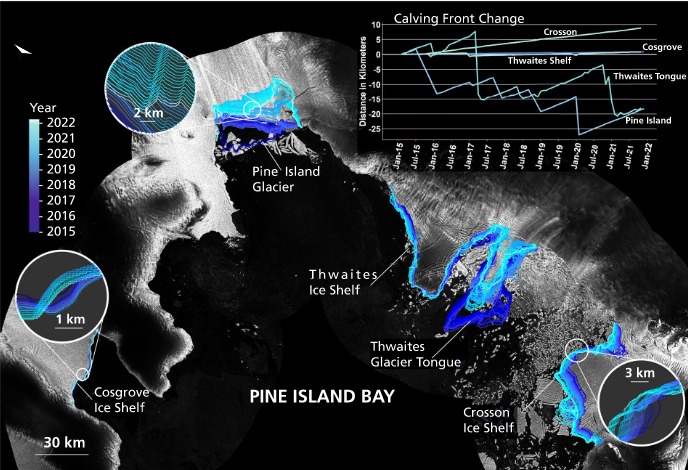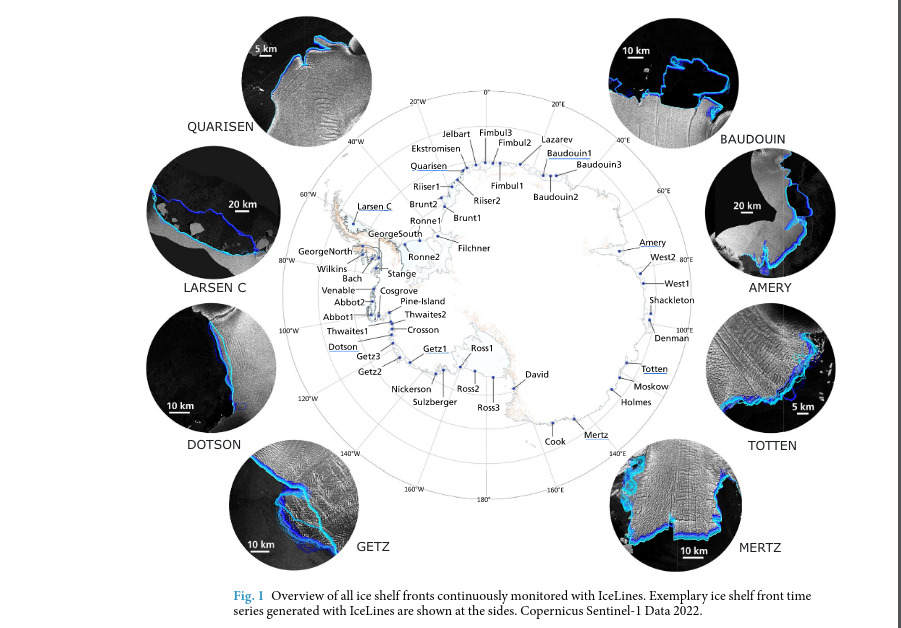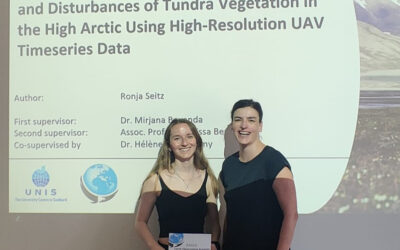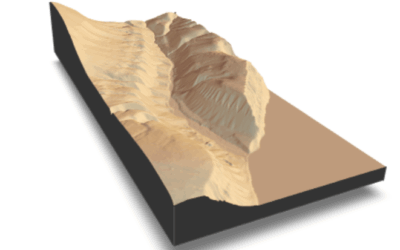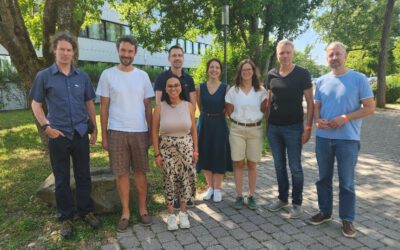A new publication on “IceLines – A new data set of Antarctic ice shelf front positions” is just published in Scientific data. From the abstract: “The frontal position of an ice shelf is an important parameter for ice dynamic modelling, the computation of mass fluxes, mapping glacier area change, calculating iceberg production rates and the estimation of ice discharge to the ocean. Until now, continuous and up-to-date information on Antarctic calving front locations is scarce due to the time-consuming manual delineation of fronts and the previously limited amount of suitable earth observation data. Here, we present IceLines, a novel dataset on Antarctic ice shelf front positions to assess calving front change at an unprecedented temporal and spatial resolution. More than 19,400 calving front positions were automatically extracted creating dense inter- and intra-annual time series of calving front change for the era of Sentinel-1 (2014-today). The calving front time series can be accessed via the EOC GeoService hosted by DLR and is updated on a monthly basis. For the first time, the presented IceLines data set provides the possibility to easily include calving front dynamics in scientific studies and modelling to improve our understanding about ice sheet dynamics.”
read the full article here:
www.nature.com/articles/s41597-023-02045-x
